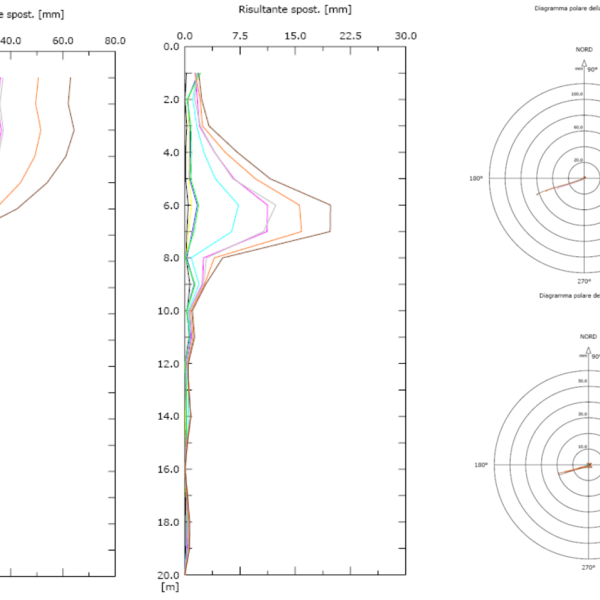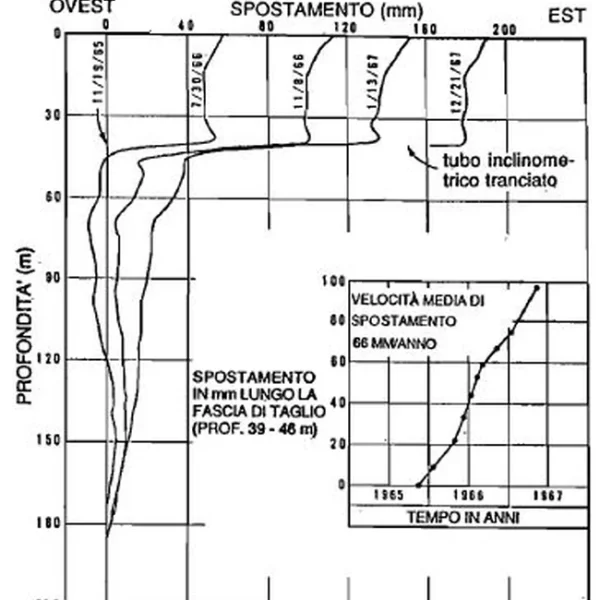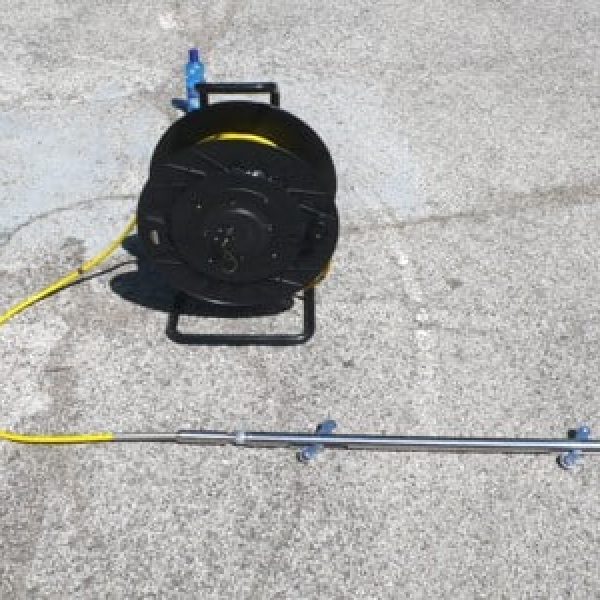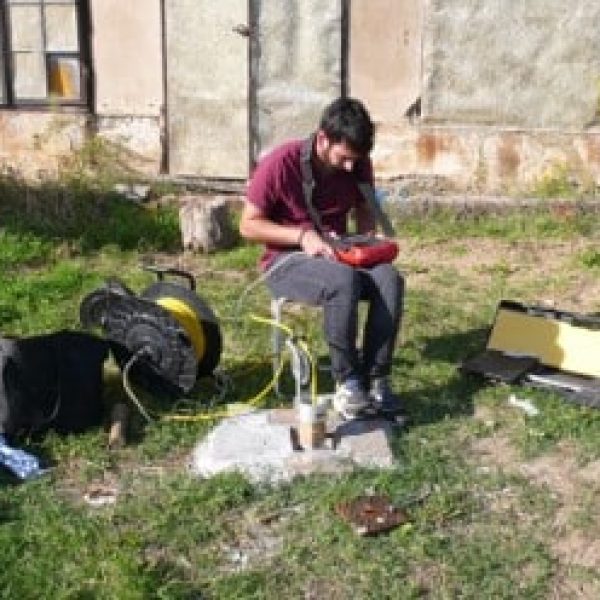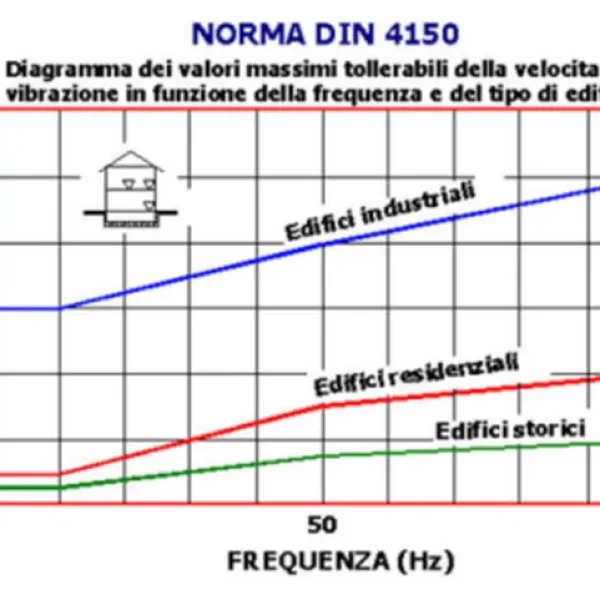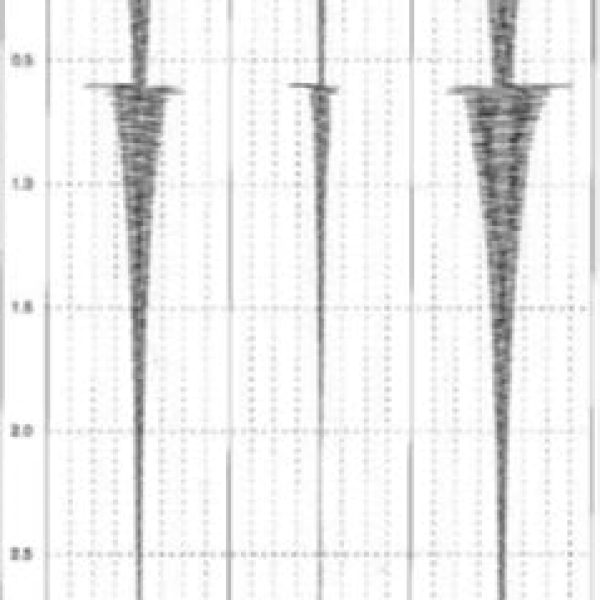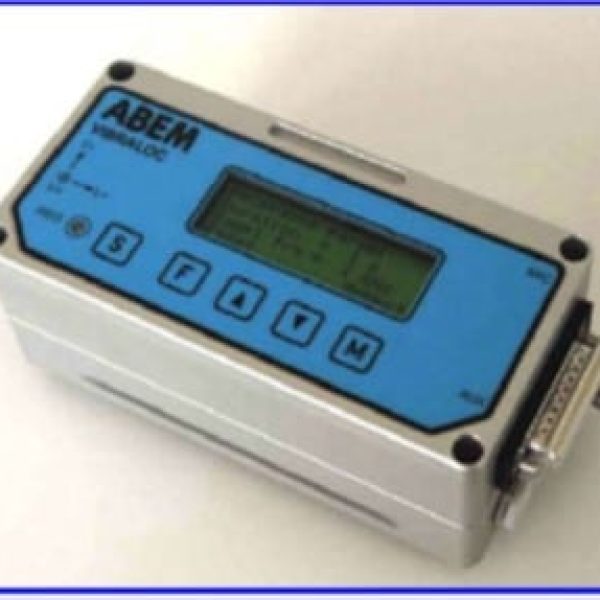Geotechnical monitoring
Inclinometer surveys
Inclinometer measurements together with other geotechnical monitoring tests (such as borehole strain gauges) are carried out in order to be able to monitor over time the state of evolution of instability involving, for example, landslides. Monitoring carried out over the years allows the sliding surface of a landslide to be identified.
The test is carried out by introducing an inclinometer tube which is installed in a hole previously made with a vertical borehole.
An inclinometer probe is then inserted inside the inclinometer tube which, equipped with high-precision sensors, allows to measure the inclination of the tube in correspondence with a given section and, through repeated measurements over time, allows to measure the horizontal displacement.
A probe inclinometer (or inclinometer probe) consists of a probe equipped with wheels, containing a sensor excited by the force of gravity, which generates an electrical signal sent via cable to an acquisition unit on which the angle θ formed by the probe axis with vertical (figures 1 and 2) or incremental displacement.
The instrument only measures ground movements normal to the borehole axis.
The inclinometer probe can detect the movement along the borehole axis in a complete and detailed way and can be used to locate the movements of the ground, wherever they take place.
A series of readings over a period of time provides the extent, direction and speed of movement to be ascertained. The same instrument can be used to take readings in any number of holes.
Applications
The main field of application of these measures concerns monitoring over time or the study of the temporal evolution of a landslide. Other fields of application concern the monitoring of embankments, dams, open pit excavations, bridge piers, diaphragm walls, retaining walls, poles, tunnels, etc.
Equipments
The instrumentation for inclinometric measurements consists of:
– Inclinometer probe consisting of a stainless steel body equipped with guide wheels, equipped with special sensors for measuring inclination
– Portable digital control unit, with special displays for reading data, possibly equipped with an acquisition system
– Electric connection cable between the inclinometer probe and the measuring unit
– Witness probe for checking the inclinometer tubes before starting the measurements
Equipments supplied
- SISGEO S09070 servo-accelerometer inclinometer probe and Archimedes data logger
Vibration monitoring
The monitoring of vibrations induced on existing buildings by ordinary or extraordinary human actions, productive or constructive actions are fields of intervention in which general attention is increasingly growing.
Using transportable digital seismic stations, it is possible to monitor the seismic activity of a site. The obtainable data are the arrival times of the seismic vibrations, the amplitudes and frequencies of stress, as well as elements on ground accelerations and therefore the possibility of an estimate of parameters that can be used directly in the engineering field. For the analysis of the vibrations induced on structures, the maximum amplitudes (in speed, acceleration or displacement), the duration and the frequencies at which these stresses are produced are evaluated.
Monitoring a vibration means listing the positions where the vibrating point is at successive times. These can then be graphed to give the entire recorded “waveform”.
The most used waveform for graphic representation is the sine wave. Once the type of mathematical relation linking the displacement of the point to the elapsed time has been accepted, to describe the vibration it is sufficient to give two characteristic numerical values defined as parameters of the measured vibration: Recording example the maximum displacement parameter of the point with respect to the rest position and the number of oscillations in one second (frequency).
The maximum displacement can be measured through the maximum speed or through the maximum acceleration.
In general, once the waveform has been defined, all these descriptions are practically equivalent, as there are simple mathematical relationships that connect them to each other.
Measurement peak analysis
In summary, the effect on a mass of a time-varying stress depends on:
- Amplitude: in general, greater amplitude results in greater damage
- Duration of the event: in general, the longer the duration, the greater the damage
- Frequency: the risk in this case is greater if the frequency of the induced vibrations is close to the natural resonance frequency of the building, because it would be greatly amplified.
The period is, as known, the inverse of the frequency; in general it can be argued that residential buildings with heights of less than 30m have their own vibration periods on average between 0.1 and 0.3 sec.
The periods of the buildings are important numerical values for the purpose of evaluating the resonance phenomenon. In fact, if we apply a perturbing impulse with a cadence corresponding to the natural frequency of a structure, it is possible to obtain a theoretically infinite increase in the vibration amplitude. Specifically, it is said that the building has entered into resonance.
This phenomenon is very harmful especially in the case of natural seismic events.
It is useful to underline that the induced vibrations of a certain entity (especially of anthropic type) generate lesions since, in addition to directly undermining the existing structures, they cause differential settlements in the foundations. These differential settlements are extremely harmful as they are not absolutely budgeted for in the design and construction phase of the work.
The “non-natural” type vibrations can be distinguished according to the daily repetitiveness and the frequency of the transmitted impulse. In general we distinguish impulsive, periodic and continuous vibrations.
Impulsive vibrations are generally limited in time but with very intense displacements.
Periodic vibrations are repeated almost constantly over time, usually at a low frequency.
Continuous vibrations tend to remain constant for long periods of time.
REFERENCE STANDARD AND DESCRIPTION OF THE WORK PHASES
The verification of the vibrations affecting a building normally requires the choice of a reference standard.
In the European context, and also in the Italian one, preference is generally given to the DIN 4150-3 Standard. The reasons for this choice are the substantial tendency towards greater prudence, especially as regards the limits of monumental buildings.
Dominant frequency analysis according to DIN 4150-3
DIN 4150 distinguishes different tolerability levels according to the construction typology of the buildings.
There are three main categories into which buildings are divided:
A) Delicate monumental historic buildings (low tolerability), minor limits.
B) Recent residential buildings (medium tolerability), medium limits.
C) Industrial buildings (high tolerability), high limits.
The standard provides for control and monitoring by rigidly installing the sensors in the appropriate positions.
Applications
The application fields are related to the verification of dynamic stresses induced by vibrations of machinery, plants, passage of heavy vehicles, explosions.
Equipment supplied
- ABEM VIBRALOC vibrometer

